Gulf charts pathway to clean steel production
1 August 2024

Steel manufacturing accounts for 7%-9% of global carbon dioxide (CO2) emissions and is considered a hard-to-abate industry. With a forecast for strong growth in global steel production in the coming decades, changes need to be implemented to bring steelmaking in line with the UN Paris Climate Agreement goal of limiting global warming to 1.5 degrees Celsius.
 The need for the international steel industry to slash CO2 and greenhouse gas emissions dominated the agenda at UN climate change summit Cop28 in Dubai last December, with about 35 companies and six industry associations, including the World Steel Association, endorsing the Industrial Transition Accelerator. The initiative aims to scale implementation and delivery of decarbonisation in the steel, aluminum, cement, transportation and energy sectors.
The need for the international steel industry to slash CO2 and greenhouse gas emissions dominated the agenda at UN climate change summit Cop28 in Dubai last December, with about 35 companies and six industry associations, including the World Steel Association, endorsing the Industrial Transition Accelerator. The initiative aims to scale implementation and delivery of decarbonisation in the steel, aluminum, cement, transportation and energy sectors.
There are many levers for steel decarbonisation, including the electrification of heat generation, improving energy efficiency and increasing the utilisation of scrap steel. However, to reach net-zero, further steps are needed to address the emissions associated with coal’s role as a reducing agent in ironmaking. Breakthrough technologies that can accomplish this include hydrogen direct reduction to replace coal; carbon capture, utilisation and storage; and electrolysis-based, or green hydrogen-supported, production processes.
The Middle East and North Africa accounts for just 5% of global steel output. Despite this low market share, however, steelmakers in the region – particularly in the Gulf – have committed billions of dollars to investments in steel projects that could implement most proven clean technologies.
To reach net-zero, further steps are needed to address the emissions associated with coal’s role as a reducing agent in ironmaking
Saudi clean steel projects
Saudi Aramco, the kingdom’s sovereign wealth institution the Public Investment Fund (PIF) and Chinese steel manufacturing conglomerate Baoshan Iron & Steel Company (Baosteel) signed a joint venture agreement in May 2023 to establish an integrated steel plate manufacturing complex in Saudi Arabia’s Ras Al-Khair Industrial City.
The facility is expected to have a production capacity of up to 1.5 million tonnes a year (t/y). It will mainly cater to industrial sectors such as pipelines, shipbuilding, rig manufacturing, offshore platform fabrication and tank and pressure vessel manufacturing, as well as the construction, renewables and marine sectors.
The plant will be equipped with a natural gas-based direct reduced iron (DRI) furnace and an electric arc furnace to reduce CO2 emissions from the steelmaking process by up to 60% compared to a traditional blast furnace. The DRI plant will be compatible with hydrogen without major equipment modifications, potentially reducing CO2 emissions by up to 90% in the future, Aramco says.
The partners have invited contractors to submit engineering, procurement, installation and construction proposals for the project, which are due by 30 July.
Separately, Indian industrial conglomerate Essar Group is advancing its planned $4bn Green Steel Arabia project, which will also be located in Ras Al-Khair. Essar’s integrated steel complex will have a production capacity of 4 million t/y, and a cold rolling capacity of 1 million t/y, along with galvanising and tin plate lines. The complex will also have two DRI plants, each with a production capacity of 2.5 million t/y.
In September 2023, Essar signed a memorandum of understanding (MoU) with Jeddah-based Desert Technologies to develop solar energy solutions to power its Green Steel Arabia project. Under the agreement, Essar and Desert Technologies will look to develop solutions for renewable energy generation – mainly solar photovoltaic power – and storage for the planned complex.
The parties will also explore opportunities for other similar projects in the region, Mumbai-headquartered Essar said at the time.
A third major clean steel project in the kingdom has been announced by Turkish steelmaker Tosyali Holding, which will invest up to $5bn in the venture. Tosyali said in January that it intends to produce steel with the help of green energy sources and will increase its solar energy output 10-fold to 2,500MW, up from the 240MW it currently uses.
Fuat Tosyali, Tosyali’s chairman, said the increase in solar output will be facilitated by a $1.5bn investment, as well as through plans to buy a stake in a hydrogen energy company.
UAE makes strides
Clean steel production efforts in the UAE have been led by Emirates Steel Arkan, the country’s largest steel manufacturer. The company has partnered with Japan's Itochu to develop a low-carbon iron processing plant in Abu Dhabi that will be capable of processing high-grade Brazilian iron ore into reduced iron, which will be sent to Japan.
The proposed plant will be built in collaboration with Japan’s JFE Steel and is expected to produce about 2.5 million metric tonnes a year of reduced iron starting in 2027. CSN Mineracao, a Brazilian company in which Itochu maintains a stake, will supply the iron ore.
Emirates Steel and Abu Dhabi National Energy Company (Taqa) have also started the concept design for an electrolyser plant that they are jointly developing. Powered by renewable energy, the plant will have a hydrogen output capacity of 160MW, which will be used in the production of steel.
Abu Dhabi aims to establish a large-scale steel production hub with an overall capacity of 15 million t/y. This projected capacity will be in addition to Emirates Steel Arkan's existing production level of 3.5 million t/y, according to the firm's group chief projects officer, Hassan Shashaa.
Meanwhile, Dubai-headquartered Liberty Steel signed an MoU in December 2023 with Abu Dhabi’s AD Ports Group to invest in a green iron production facility in Khalifa Economic Zones Abu Dhabi.
Under the MoU, the two companies will explore the establishment of a green iron production facility and related port infrastructure and conveyor system at Khalifa Port in Abu Dhabi. The MoU is part of Liberty’s early-stage concept development to convert its magnetite ore into green iron in the UAE, using gas and transitioning to green hydrogen once it becomes available at scale in the next decade.
Green steel producers [in Oman] could benefit from cheap, locally available green hydrogen feedstock
Oman’s green steel plans
The largest green steel project in Oman is being developed by Vulcan Green Steel (VGS), the steel arm of Vulcan Green, which is owned by India’s Jindal Steel Group. VGS broke ground on the estimated $3bn project in December 2023.
The planned facility, covering 2 square kilometres in the Special Economic Zone at Duqm (Sezad), will have two production lines of 2.5 million t/y each, comprising DRI units, an electric arc furnace and a hot strip mill.
Set for completion by 2026, the planned facility will primarily utilise green hydrogen to produce 5 million t/y of green steel. This will make it the world’s largest renewable energy-based green steel manufacturing complex once it is commissioned.
Sezad could also host another large-scale green steel project if Japanese steel manufacturer Kobe Steel and Tokyo-based Mitsui & Company are able to achieve the final investment decision on a preliminary agreement they signed in April last year to develop a low-carbon iron metallics project.
The two Japanese firms agreed to conduct a detailed business study in line with the goal of commencing low-carbon dioxide iron metallics production by 2027. The project is expected to produce 5 million t/y of DRI using a process called Midrex, where DRI is produced from iron ores through a natural gas or hydrogen-based shaft furnace.
Green steel producers in the sultanate could benefit from cheap, locally-available green hydrogen feedstock if the Amnah consortium – which won the first land block contract that Hydrogen Oman (Hydrom) auctioned last year – achieves the financial investment decision on its planned project by 2026.
The estimated $6bn-$7bn project will supply green hydrogen to domestic and overseas steel producers, Amnah project director Mark Geilenkirchen told MEED last year.
The planned integrated facility is expected to have a capacity of 220,000 t/y of green hydrogen and will require up to 4.5GW of renewable energy capacity. Unlike other projects in the region that aim almost exclusively to export their green hydrogen derivative products such as ammonia, Amnah is considering converting or using green hydrogen to support sustainable steel production.
Exclusive from Meed
-
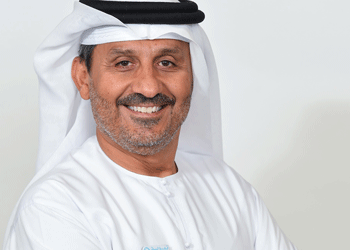 Tabreed finishes the year on a high
Tabreed finishes the year on a high17 December 2025
-
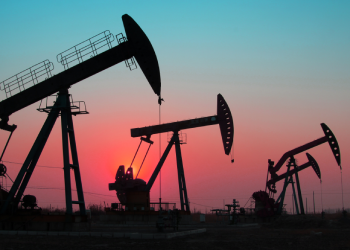 Kuwait Oil Company seeks higher project budgets
Kuwait Oil Company seeks higher project budgets17 December 2025
-
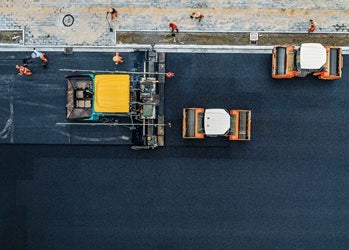 Morocco awards $185m Guercif-Nador road contracts
Morocco awards $185m Guercif-Nador road contracts17 December 2025
-
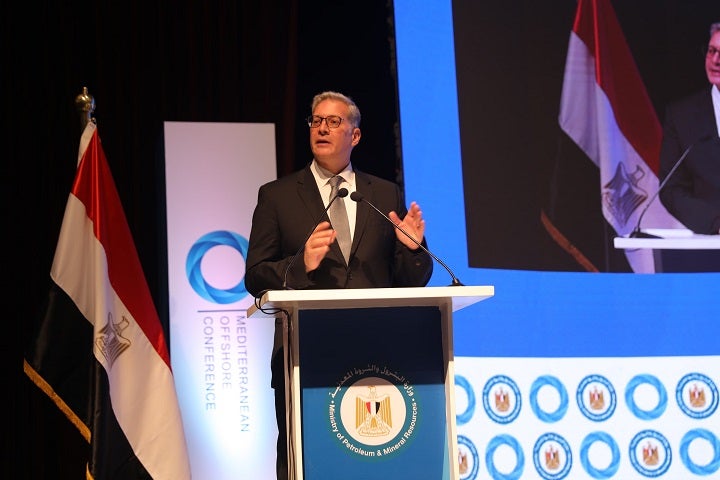 Egypt plans $5.7bn oil and gas exploration campaign
Egypt plans $5.7bn oil and gas exploration campaign17 December 2025
-
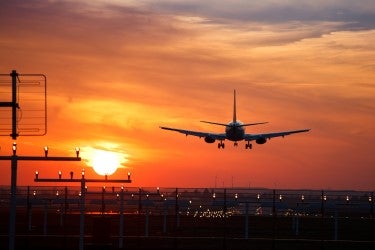 Saudi Arabia to award Abha airport expansion by March
Saudi Arabia to award Abha airport expansion by March17 December 2025
All of this is only 1% of what MEED.com has to offer
Subscribe now and unlock all the 153,671 articles on MEED.com
- All the latest news, data, and market intelligence across MENA at your fingerprints
- First-hand updates and inside information on projects, clients and competitors that matter to you
- 20 years' archive of information, data, and news for you to access at your convenience
- Strategize to succeed and minimise risks with timely analysis of current and future market trends

Related Articles
-
 Tabreed finishes the year on a high
Tabreed finishes the year on a high17 December 2025

Tabreed is consolidating its position as a leading regional district cooling provider following a series of major transactions and new concessions that will reshape its portfolio in the UAE and beyond.
In 2025, the company completed the AED3.87bn ($1bn) acquisition of PAL Cooling Holding (PCH) in consortium with CVC DIF, and finalised the long-term district cooling concession for Palm Jebel Ali in Dubai as part of a joint venture (JV) with Dubai Holding Investments.
The PCH deal will eventually add about 600,000 refrigeration tons (RT) of capacity across eight long-term concessions in Abu Dhabi, raising Tabreed’s total connected capacity by 13% to 1.55 million RT. The AED1.5bn Palm Jebel Ali JV will ultimately deliver a further 250,000RT.
Speaking to MEED, Tabreed CEO Khalid Al-Marzooqi outlined how the company is integrating the newly acquired brownfield assets, developing greenfield projects and advancing a new generation of sustainable cooling solutions, including geothermal energy for data centres.
Tabreed’s recent milestones span both greenfield and brownfield investments, each requiring a different approach, says Al-Marzooqi.
Greenfield projects, such as Palm Jebel Ali, remain Tabreed’s preferred route for new capacity, he adds. “The beauty of a greenfield is that you can optimise it the way you want. You build it as you want.”
For new plants, Tabreed designs the civil structure to accommodate long-term capacity, while phasing in mechanical equipment in line with demand. By contrast, the acquisition of PCH is a large-scale brownfield integration, bringing in a portfolio of existing and future plants and networks, mainly on Abu Dhabi’s main island and Reem Island.
The immediate focus is on integration and driving network synergies. “That’s the beauty of district cooling. If you achieve the synergies, the benefits literally double up and triple up as well,” Al-Marzooqi says.
By interconnecting plants, Tabreed can avoid building for peak capacity at each individual site and instead leverage shared spare capacity across the network.
Growth strategy
Acquiring a competitor in Abu Dhabi is part of a strategy to sustain growth in a sector where many contracts follow build-own-operate-transfer or similarly time-bound models.
Organic growth via new concessions and inorganic growth via acquisitions are both seen as key to maintaining and expanding the asset base.
Tabreed’s portfolio remains weighted towards the UAE, with the home market accounting for the bulk of its business.
Beyond the UAE, Tabreed has built a regional presence, with a partially owned business in Saudi Arabia, where it sees significant growth potential as district cooling is integrated into gigaprojects and major urban developments; a wholly owned operation in Bahrain; and a majority stake in Tabreed Oman, a market that Al-Marzooqi says is expanding well.
Despite the energy and lifecycle cost benefits of district cooling, Al-Marzooqi says tariff subsidies on conventional, building-level cooling are a barrier to adoption in parts of the UAE.
“The killer for us is subsidy,” he says, explaining that artificially low tariffs for individual customers make it harder for district cooling to compete on price in Abu Dhabi compared to Dubai.
He says that policy support and regulatory mandates are needed, particularly as existing buildings approach the end of life for their standalone cooling systems. At that point, compulsory connection to district cooling could lock in significant energy savings and emissions reductions at city scale.
Raising Abu Dhabi’s district cooling penetration from about 15% towards Dubai’s estimated 30% remains a key concern and strategic objective.
In Abu Dhabi, Tabreed has developed … the Middle East’s first geothermal-powered district cooling plant
Geothermal breakthrough
Alongside portfolio growth, Tabreed is investing in new technologies to decarbonise cooling, with a focus on large campuses, major developments and, increasingly, data centres.
At Masdar City in Abu Dhabi, Tabreed has developed what Al-Marzooqi describes as the Middle East’s first geothermal-powered district cooling plant.
“We have started off by building the region’s first geothermal plant, to prove the concept of using geothermal energy to provide cooling,” he says.
The pilot plant is already achieving efficiency levels in the range of 0.5-0.6 kilowatts per ton (kW/ton) of cooling, better than Tabreed’s typical district cooling benchmark of about 0.85kW/ton. Conventional, standalone cooling systems generally consume about twice as much energy per ton.
“This is proof that if you really want to pursue a sustainable cooling solution for data centres in this area, this is the one,” he says.
Data centres are emerging as a priority growth segment for Tabreed. The facilities have high, continuous cooling loads and increasingly stringent decarbonisation requirements, making them a natural fit with both district cooling and geothermal systems.
Al-Marzooqi says geothermal cooling is a “godsend solution” for data centres, combining 24/7 availability with the potential for near-zero operational emissions.
For hyperscale and colocation data centre operators facing mounting pressure to reduce their carbon footprint, geothermal district cooling could offer a differentiated, long-term solution in the Gulf region, particularly where grid power is still largely fossil-fuel based.
Tabreed’s technology agenda is not limited to low-carbon generation. The utility is in the second phase of connecting its plants to a centralised digital control centre, enabling remote operation and optimisation.
The long-term goal is for the majority of plants to be unmanned, with operations centrally monitored and controlled. This integrated view of the network will enable the application of artificial intelligence and advanced analytics to fine-tune performance, optimise energy use and predict maintenance requirements.
https://image.digitalinsightresearch.in/uploads/NewsArticle/15266676/main.gif -
 Kuwait Oil Company seeks higher project budgets
Kuwait Oil Company seeks higher project budgets17 December 2025

Contractors in Kuwait expect to have answers by the end of the year on whether budgets for several key upstream projects in the oil and gas sector will be increased, according to industry sources.
State-owned upstream operator Kuwait Oil Company (KOC) is seeking approvals for at least three upstream projects, for which bids came in significantly over budget.
The first project, with a low bid of $2.47bn, involves the development of two facilities: Separation Gathering Centre 1 (SGC-1) and Water Injection Plant 1 (WIP-1).
The second project, with a low bid of $2.48bn, focuses on developing SGC‑3 and WIP‑3.
The third project, which involves developing effluent water disposal plants for injector wells, had a low bid of $1.3bn.
For KOC to increase the budgets for all three projects, approvals will be required from Kuwait Petroleum Corporation (KPC) and the country’s Ministry of Finance.
Already cancelled
One Kuwaiti oil project tender that received bids significantly above budget has already been cancelled.
On 7 October, MEED reported that the tender for the SGC-2 oil project – focused on the installation of a separation gathering centre – was cancelled by Kuwait’s Central Agency for Public Tenders.
Earlier this year, UK-based Petrofac had submitted a bid more than double the project’s proposed budget.
Petrofac’s bid was KD422.45m ($1.37bn), while the provisional budget stood at KD207m ($670.2m).
This contract is expected to be retendered, but there is significant uncertainty about when a new invitation to bid will be issued and how the scope may change.
Earlier in December, MEED reported that KOC was discussing whether to retender the contract using a different contract model.
Initially, the project was tendered using the engineering, procurement and construction (EPC) contract model.
Discussions are ongoing on whether it will be relaunched under a build-own-operate (BOO) contract model.
https://image.digitalinsightresearch.in/uploads/NewsArticle/15263996/main.png -
 Morocco awards $185m Guercif-Nador road contracts
Morocco awards $185m Guercif-Nador road contracts17 December 2025

Morocco’s Ministry of Equipment, Transport, Logistics & Water has awarded three contracts totalling MD1.7bn ($185m) for building three lots of the 40-kilometre (km) section two of the Guercif to Nador highway between Saka and Driouch.
The contracts were awarded to local firms.
Casablanca-based Groupe Mojazine won a $64m contract for lot one, which covers the construction of 14km of highway.
The other two contracts covering construction works on lots two and three were awarded to the local firm Bioui Travaux.
The contract value for lot two is over $56m and covers the 12km highway section. The lot three contract is worth about $69m and covers 40km of highway construction.
The 104km Guercif to Nador highway is being implemented in three sections. Prequalification for section two from Saka to Driouch was completed in June, as MEED reported.
The estimated $700m project, partly funded by the African Development Bank, is part of the kingdom’s plans to upgrade its public infrastructure in preparation for co-hosting the 2030 Fifa World Cup alongside Portugal and Spain. The programme includes the expansion of over 1,000km of highways.
In May, Societe Nationale des Autoroutes du Maroc awarded MD5bn ($540m) of contracts for nine packages covering construction works on the Rabat-Casablanca continental expressway.
Morocco’s construction and infrastructure sector is gearing up for billions of dollars in projects as the North African nation continues to award contracts for building infrastructure for the 2030 Fifa World Cup.
Morocco has made a strong head start in ensuring that the necessary infrastructure is ready for the tournament.
According to data from regional project tracker MEED Projects, 2024 was the best year in the past decade for construction and transport contract awards in Morocco, with contracts worth over $3.6bn signed with local construction firms and international companies from South Korea, China, France and Spain.
https://image.digitalinsightresearch.in/uploads/NewsArticle/15266606/main.jpg -
 Egypt plans $5.7bn oil and gas exploration campaign
Egypt plans $5.7bn oil and gas exploration campaign17 December 2025
Egypt plans to drill 480 exploratory wells, with total investment estimated at $5.7bn, over the next five years, according to Karim Badawi, the country’s minister of petroleum and mineral resources.
Speaking at a conference in Cairo, Badawi said that Egypt’s oil and gas sector was stabilising after a period of decline.
He said that his ministry was targeting an increase in gas production for the first time in four years.
The government is also aiming for self-sufficiency in crude oil production within five years, he said.
Egypt is aiming to boost crude production by introducing investment incentive packages and utilising new production technologies.
Badawi highlighted specific capital commitments from international partners to develop oil and gas resources over the next five years. These included Italian company Eni’s commitment to invest $8bn, as well as London-headquartered BP’s plan to invest $5bn.
He also highlighted Arcius Energy’s plan to invest $3.7bn. Arcius Energy is a joint venture of BP and Adnoc’s XRG.
The $5.7bn exploration programme includes 101 wells scheduled for drilling in 2026.
Badawi said that seismic survey operations would expand to cover 100,000 square kilometres in the Western Desert and 95,000 square kilometres in the Eastern Mediterranean using Ocean Bottom Node (OBN) technology.
Renewable energy strategy
Addressing the national energy strategy, Badawi said the government aims to increase the share of renewable energy in electricity generation to 42% by 2030.
He said this would enable natural gas to be redirected to value-added industries, such as petrochemicals and fertilisers, to boost exports.
On the transition to green energy, the minister cited plans to reduce reliance on traditional fuels and open investment in sustainable aviation fuel (SAF), green ammonia and bioethanol.
Efficiency measures in the sector have already reduced carbon emissions by 1.4 million tonnes, he said.
Recently, Egypt announced a $200m deal with Qatar to produce aviation fuel from used cooking oil.
https://image.digitalinsightresearch.in/uploads/NewsArticle/15264077/main0508.jpg -
 Saudi Arabia to award Abha airport expansion by March
Saudi Arabia to award Abha airport expansion by March17 December 2025
Register for MEED’s 14-day trial access
Saudi Arabia’s Civil Aviation Holding Company (Matarat) and the National Centre for Privatisation & PPP (NCP) are expected to award the contract to develop and operate a new passenger terminal building and related facilities at Abha International airport by March next year.
The announcement was made by Abdulaziz Al-Duailej, president of the General Authority of Civil Aviation (Gaca), at the Supply Chain and Logistics Conference 2025 in Riyadh on Tuesday.
The companies prequalified to bid for the contract are:
- GMR Airports (India)
- Mada TAV: Mada International Holding (local) / TAV Airports Holding
- Touwalk Alliance: Skilled Engineers Contracting (local) / Limak Insaat (Turkiye) / Incheon International Airport Corporation (South Korea) / Dar Al-Handasah Consultants (Shair & Partners, Lebanon) / Obermeyer Middle East (Germany/Abu Dhabi)
- VI Asyad DAA: Vision International Investment Company (local) / Asyad Holding (local) / DAA International (Ireland)
Located in Asir Province, the first phase of the Abha International airport public-private partnership (PPP) project will expand the terminal area from 10,500 square metres (sq m) to 65,000 sq m.
In early March this year, the clients held one-on-one meetings with prospective bidders in Riyadh, as reported by MEED.
The contract scope includes a new rapid-exit taxiway on the existing runway, a new apron to serve the new terminal, access roads to the new terminal building and a new car park area.
Additionally, the scope includes support facilities, such as an electrical substation expansion and a new sewage treatment plant.
Construction is scheduled for completion in 2028.
The project will be developed under a build-transfer-operate (BTO) model and involves designing, financing, constructing and operating a greenfield terminal.
This will be the kingdom’s third airport PPP project, following the Hajj terminal at Jeddah’s King Abdulaziz International airport and the $1.2bn Prince Mohammed Bin Abdulaziz International airport in Medina.
Higher capacity
According to Matarat, Abha airport’s capacity will increase to accommodate over 13 million passengers annually—a 10-fold rise from its current 1.5 million capacity.
Once completed, the airport will handle more than 90,000 flights a year, up from 30,000.
The new terminal is also expected to feature 20 gates and 41 check-in counters, including seven new self-service check-in kiosks.
The BTO contract duration is 30 years.
The existing terminal, which served 4.4 million passengers in 2019, will be closed once the new terminal becomes operational.
Matarat’s transaction advisory team for the project comprises UK-headquartered Deloitte as financial adviser, ALG as technical adviser and London-based Ashurst as legal adviser.
https://image.digitalinsightresearch.in/uploads/NewsArticle/15264715/main.jpg

